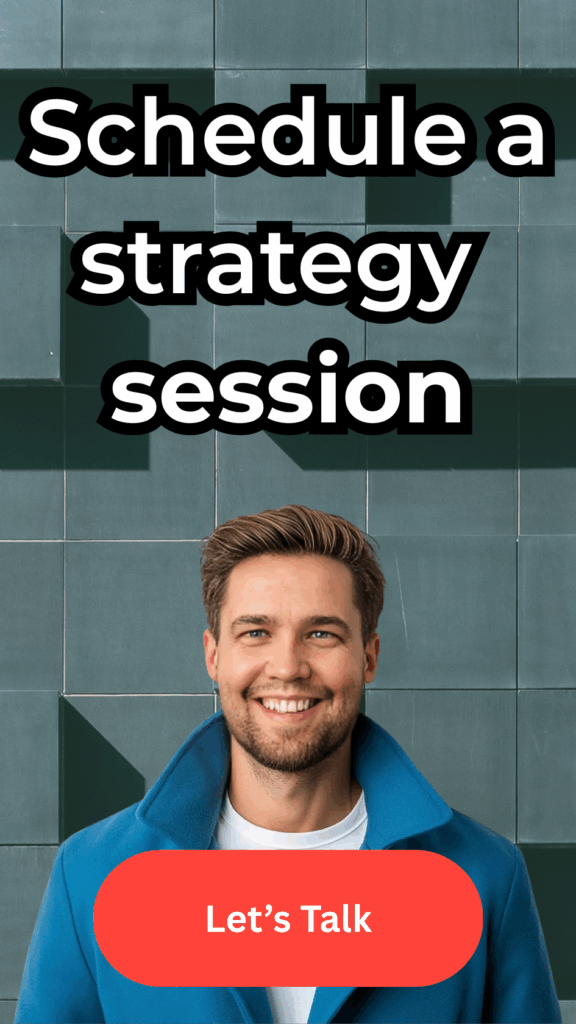Is manual paid media holding back your pipeline?
Budgets aren’t shrinking—patience is. Leadership wants qualified pipeline, not screenshots. If your plan still leans on static segments, monthly creative refreshes, and end-of-month budget fixes, you’re burning money. The fix starts when teams build AI-driven marketing workflows that connect paid signals to CRM truth so the system learns what closes, not just what clicks.
Audience targeting is stale when it rests on firmographics alone. Real intent hides in behavior: repeat pricing-page visits, webinar engagement, product doc sessions, competitor-comparison searches. AI reads those micro-signals at scale and updates segments in real time—no more guessing who’s actually in-market.
Creative operations move too slowly. If you’re running two ad variants across five channels, you’re under-learning. AI should generate, tag, and rotate dozens of creative hypotheses per week—copy, imagery, offers—then auto-promote winners based on revenue-weighted outcomes, not CTR vanity.
Data silos keep paid media blindfolded. Without a tight loop between platforms and CRM, your bidding algorithms optimize on proxy events. You need durable IDs, offline conversions, and event hygiene so B2B marketing analytics can tell the real story—pipeline velocity, sales cycle, and win rate by audience and creative.
And when you finally stitch it all together, use the insights to optimize campaign performance across the funnel. Move budgets where intent concentrates, not where impressions are cheap. I’ve sunset campaigns with “great” click metrics because they sent the wrong buyers into sales—fast traffic, zero revenue.
I’ve run programs where we cut manual rules in half and let the algorithm lead. Within a month, our cost per qualified opportunity dropped 29% while sales accepted more leads. The difference wasn’t a clever ad—it was a smarter feedback loop.
What happens when AI runs targeting, creative, and spend?
Teams that let AI handle the heavy lifting don’t get incremental gains—they unlock compounding ones. AI in B2B marketing isn’t a nice-to-have feature; it’s the operating system that overclocks your segmentation, creative, and budget decisions.
- Audience targeting: AI-assisted segmentation weighs recency, frequency, and depth of engagement, not just titles. It spots clusters like “security leaders who visited pricing twice after a webinar” and scales lookalikes with higher close rates.
- Creative iteration: Generative tools propose 30–50 variants per theme, while models tag assets by message, visual, and offer. Winners rise hourly. Many teams see 20–25% conversion lifts when creative turnover accelerates.
- Spend allocation: Real-time budget shifters (think Performance Max and Advantage+) move dollars toward high-intent cohorts and placements—during the day, not the quarter. We’ve seen 25–30% lower CPA when manual bidding steps aside.
- Performance loops: Offline conversions from HubSpot feed Google and LinkedIn so algorithms chase revenue-qualified events. That’s the moment paid clicks turn into sales conversations, not just form fills.
When the loop tightens, B2B marketing analytics stop being a rearview mirror and become a steering wheel. Your dashboards flag what to create next, who to target next, and where to deploy budget next. The playbook evolves every week because the data teaches it how.
I’ve shipped this system in SaaS, cybersecurity, and data tooling. One rollout hit a 42% lift in lead-to-MQL and a 23% drop in blended CAC by feeding offline opportunity stages back to ad platforms and suppressing low-quality events. The best part—sales felt the change inside two sprints.
AI is the new SDR—minus the coffee breaks. It never forgets a touchpoint, never slows its follow-up, and never stops testing message-market fit.

How do you build a performance loop that compounds every week?
Start with the data spine. Map every high-intent action in your funnel and standardize UTM discipline across ads, social, email, and site. Push clean, de-duplicated events into HubSpot. Import offline conversions—SAL, SQL, pipeline created—into Google Ads and LinkedIn, and dismiss low-quality goals that confuse bidding (page views don’t pay commissions).
Wire your audiences to your truth. Use CRM traits and behaviors to build seed lists and exclusions—ICP fit, stage, product interest, buying committee role. Layer in Apollo.io for contact enrichment and account signals, then let platforms expand intelligently. This is AI in B2B marketing done right: the model learns from your winners and hunts for their twins.
Industrialize creative. Treat creative like code. Generate multiple concepts per theme, tag variants by angle (pain, outcome, proof), and set daily rotation rules. Keep a “control” ad for baselines, and ship two new concepts every week. Brevo can auto-slice email variants from top performers, while the ad stack tests short-form video cuts, stat cards, and testimonial snippets.
Let budget flow where outcomes live. Start with guardrails—min and max per channel, acceptable CAC bands, and pacing rules. Then allow algorithmic reallocation by audience and placement. When a LinkedIn sequence dips below efficiency, funds jump to search-branded capture or mid-funnel retargeting without a war room call.
Operational cadence matters. Run two-week test sprints, review a tight set of revenue-weighted KPIs, and retire any metric that doesn’t guide a decision. Ship small, learn fast, scale winners. I’ve seen teams reduce meetings by half once dashboards told them what to do next—no debate, just execution.
Ready to improve your marketing systems? Explore how AI-powered B2B strategies drive measurable growth.








